How To Build a Financial Model For a Food Truck?
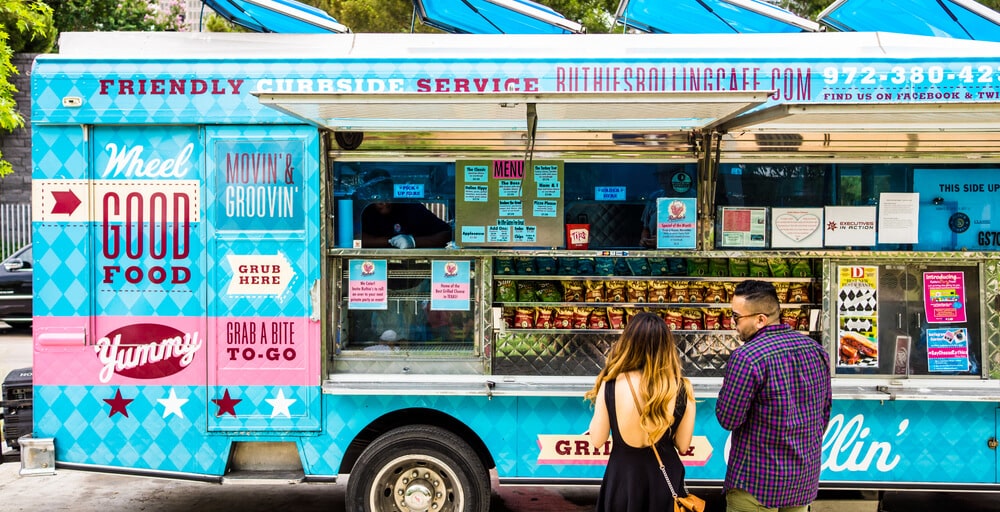
Whether you want to understand what’s your breakeven, your valuation or create a budget for the business plan of your food truck, you will need to build a solid financial model.
In this article we’ll explain you how to create powerful and accurate financial projections for a food truck. Note that the numbers, charts and financials presented in this article come from our financial model template for food trucks.
For more information on food truck businesses, make sure to read our guides below: How To Start a Food Truck In 9 Steps How Much Does It Cost To Start a Food Truck Business? 12 Strategies To Increase Food Truck Sales & Profits How to Write a Food Truck Business Plan: Complete Guide
1. Forecast Customers
The first thing you must do to create a financial model for your food truck is to forecast the number of customers you will serve over time. You can do it the easy way or make it more complex based on your requirements.
The guidelines below are our recommendations to create accurate and flexible customer projections for any food truck. To forecast customers, you must set the number of:
- Customers you expect to serve on average on a weekday vs. on a weekend day instead
- Days you are open in a week on average (for example 4 weekdays and 2 weekend days if you are open Tuesday to Sunday)
The second input you can add to your financial projections are the number of food trucks you have. Indeed, this is very useful if you run a number of franchise of food trucks for example.
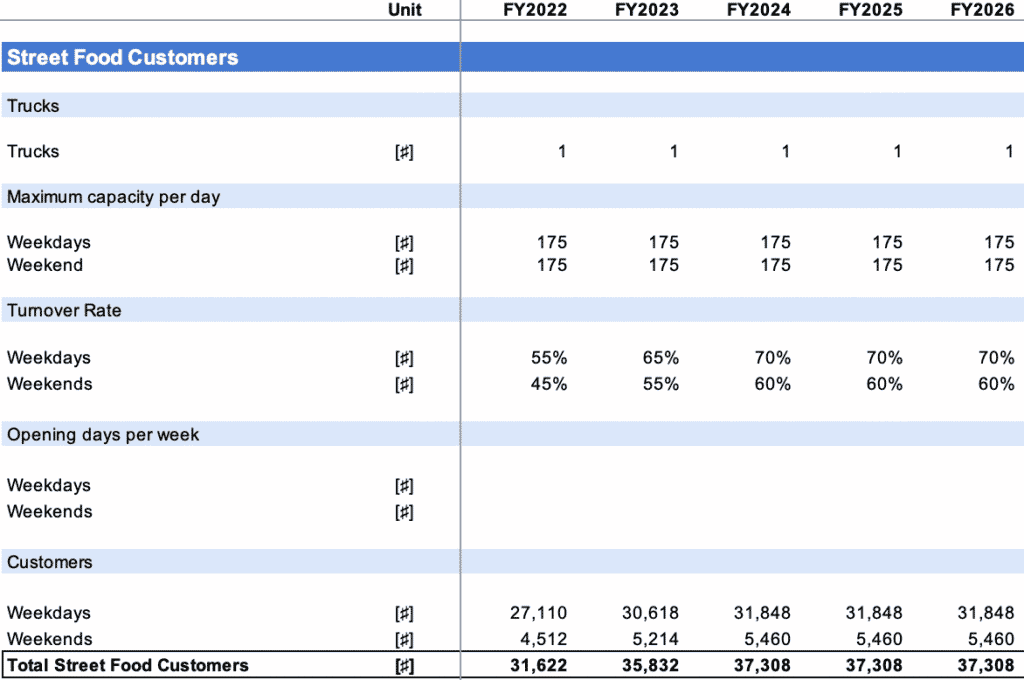
That way, you will be able to forecast accurately the total number of customers you can serve over time, as well as the revenues which we will now see in the next section. Customers can then be represented between those who come on a weekday vs. on weekends as shown in the example below:

2. Forecast Revenue
Now that we have estimated the number of customers over time, the 2nd step of our food truck financial model is to calculate revenue. Yet, before we do so, we recommend to segment revenue into 2 different revenue streams:
- Street food customers: you serve and charge customers one by one
- Event catering: you serve customers as part of an event of which the organiser pays you a fixed fee
1. Street food revenue
Here we must break down the number of customers into the different products they may buy. Indeed, most of you customers may buy food at an average price of $9.50, yet some may also buy other products such as drinks for $5.50, desserts for $6.50 or even a menu for $12.50, etc.
It’s very important to break it down right. Indeed, as you know all these products have very different unit economics (prices and profit margins) you need to forecast accurately. Let’s see now how.
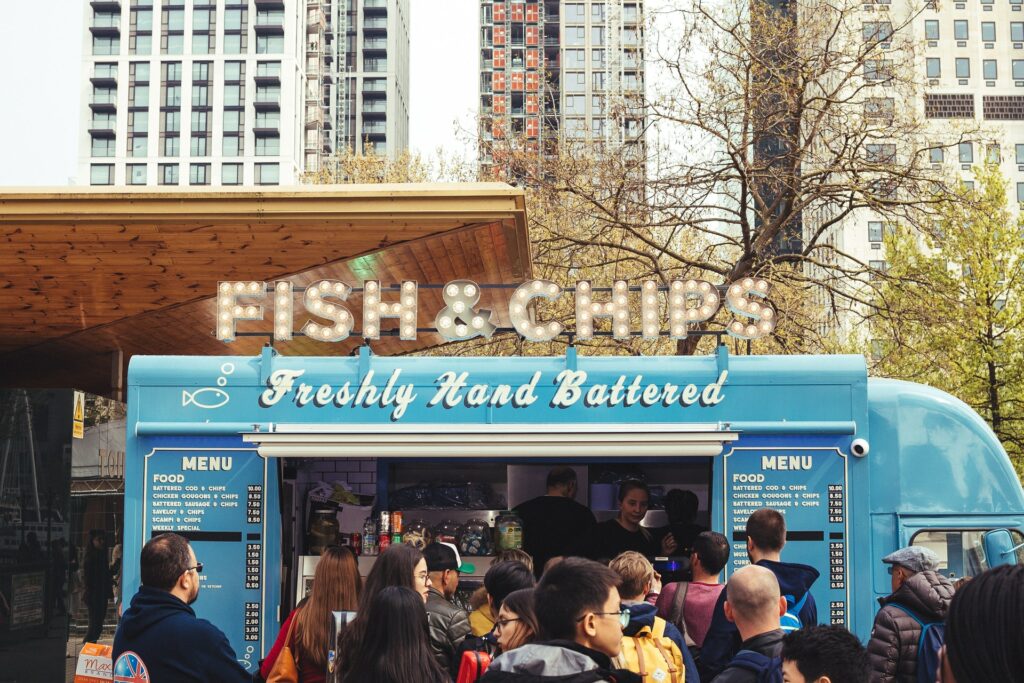
First, break down the products into a percentage of your total customers. For example:
- 50% of the customers may choose to get a burger at an average price of $9.50;
- another 25% get drinks at an average price of $5.50;
- 20% buy a dessert for $6.50, and so on..
That way, you can now multiply the number of customers for each product by their respective price to obtain street food revenue.
2. Event catering
Event catering revenue is easier to forecast. Simply set a number of catering events per month (a number of days) which you multiply by an average revenue per event (say $1,500).
That way, you will be able to forecast accurately your revenue for each revenue stream as shown in the example below:
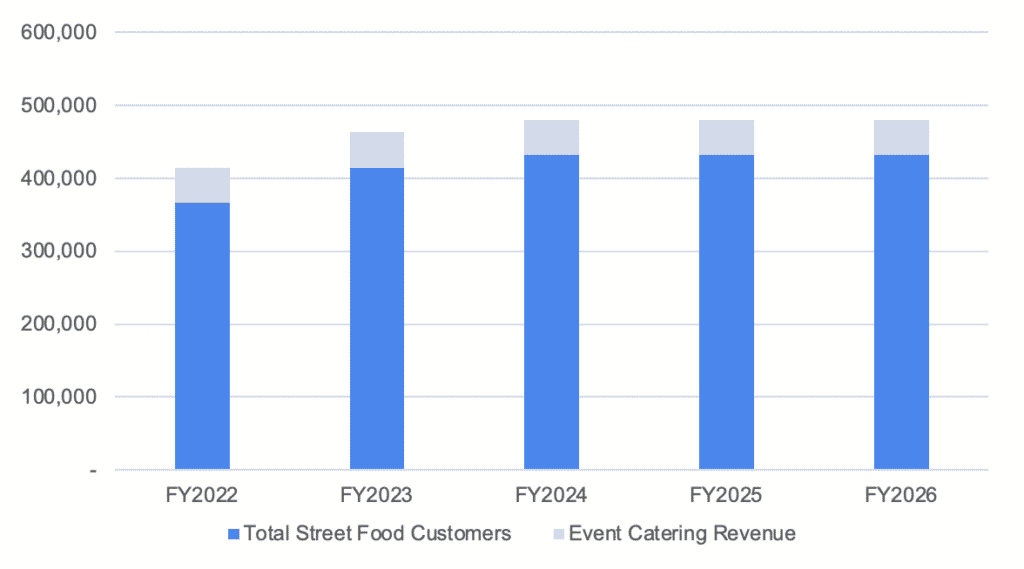
3. Forecast Expenses
In addition to the one-off startup costs discussed here, you must also budget for all the operating costs of running a food truck when preparing your financial model.
The operating costs depend on your menu and the number of days you operate per month. Here’s a brief overview of the operating costs which you can expect for a casual food truck with 2 full-time employees.
Note that the operating costs below exclude other costs such as potential bank loan interest expenses and amortization and depreciation costs which you should also take into account.
| Operating cost | Amount (per month) |
|---|---|
| COGS | $8,000 – $10,000 |
| Staff | $7,500 – $10,000 |
| Legal compliance | $500 – $3,000 |
| Utility bills | $500 – $1,500 |
| Other | $500 – $1,500 |
| Truck rental costs | $0* |
| Total | $17,000 – $26,000 |
Cost of Goods Sold (COGS)
With staff costs, the COGS are perhaps the most important operating expense you must account for when operating a food truck.
Like for restaurants, the COGS for food trucks is usually between 28% and 35% of monthly revenue, but it can be as high as 40%. Of course, the cost will depend on the type of food you serve.
For example, let’s assume you serve on average 175 people per day, this results in approximately 2,500 people a month (assuming 6 days a week). Assuming an average order value of $11.50, the total monthly revenue would be $29,000.
Therefore, in that case the COGS would be around $8,000 to $10,000.
Staff
Do you need staff to help you with the day-to-day operations? The average pay for a food truck worker is $17 per hour. Like restaurants, food trucks typically spend 30-40% of their sales in staff costs. Indeed, although there is no service (and so no waiter), the average spend per customer is indeed much lower for food trucks.
For example, assuming a team of 1 chef and 1 operator taking care of packaging and payments, you should be spending around $7,500 to $10,000 per month excluding any potential manager’s salary.
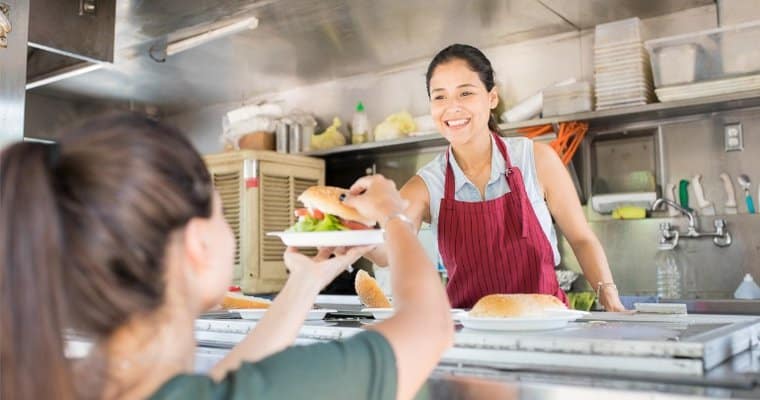
Legal Compliance
Unlike other businesses with a fixed location, food trucks must take into account several compliance legal costs if they intent to move around (which they often do).
According to a Food Truck Nation report, food truck owners must spend anywhere from $5,410 in Portland and as high as $37,907 in Boston per year. Legal compliance costs include things such as regular health and safety inspections, permits renewal, parking and other local procedures mandatory to operate a food truck.
Utility Bills
it would help if you had fuel and maintenance costs to keep the food truck moving. Besides, you have to pay for water and propane. The average price of maintaining a food truck and paying the utility bills is between $500 and $1,500 depending on your travel plans and services.
Bookkeeping & POS Software
The POS system is your register that keeps a record of all transactions. Food trucks can save cash by accepting cash payments rather than using the POS system and paying the card processing fees. Monthly accounting charges can cost up to $250 per month.
Insurance
You need to cover your vehicle, equipment, and staff. The average expense on insurance is $150 per month for a business owner’s policy or a median annual premium of $1,260. The business owner’s policy bundles general liability insurance with the property insurance at a discounted rate.

4. Build your P&L And Cash flow
The final step for our food truck financial model is to build the profit-and-loss (P&L) from revenues down to net profit, as well as the cash flow statement.
The profit-and-loss (P&L) is rather simple to build once we have future revenues and expenses. Simply take your revenues and subtract all expenses. The P&L will also help you to visualise key financial metrics such as Gross Profit or EBITDA margin as shown below:

The cash flow statement, in comparison, needs to include all cash items from the P&L and other cash movements such as capital investments (also referred as “Capex”), fundraising, debt, etc.
Cash flow is vital as it will help you understand how much funding you should get, either from investors or the bank (SBA loan for example) to start and run your own food truck.
In this chart below, we're showing you an example of the typical cost structure a food truck would have. Unsurprisingly, salaries and COGS represent ~60% of total expenses.




